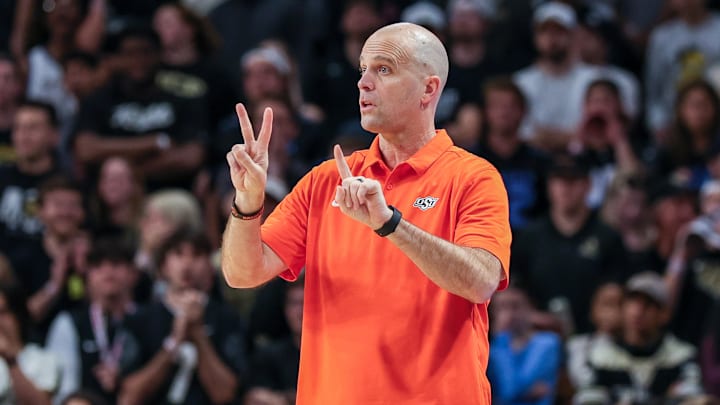What to Expect from Ryan Crotty in Year One
One of the most intriguing storylines for this season is the arrival of Ryan Crotty, a four-star prospect who chose Oklahoma State over offers from Miami, Virginia Tech, Clemson, Butler, and others. Crotty’s claim to fame is his shooting touch: as a junior at The Miller School in Virginia, he drained a state-record 142 three‑pointers at a blistering 46 percent clip. As a senior, he followed that by knocking down 115 threes on 43 percent shooting from deep.
The question now: how quickly can he acclimate to the college game, the OSU system, and the physical demands of Big 12 play? If he adjusts swiftly, Crotty could carve out a significant role off the bench, or even in a starting capacity, especially as a floor-spacing weapon on offense. His shot-making ability offers a weapon that defenses must respect. However, his defensive development, strength, and consistency will likely lag behind initially. Thus the cautious optimism: if Crotty earns trust early, he has the potential to be a key piece in OSU’s offensive attack in Year 1, while growing his impact on the other end.
Can the Offense Take a Big Leap Forward?
Last season, the Cowboys scored an average of 73.0 points per game, placing them 11th in the Big 12. Their three-point shooting was equally problematic: they made just 33.1 percent of their threes, ranking 10th in the league. For OSU to climb in a loaded Big 12, the offense must take a noticeable step up.
Coach Lutz seems to envision more perimeter offense and smaller lineups that emphasize spacing and three-point volume. But volume without efficiency can backfire. If the Cowboys can push their three-point percentage into the mid‑30s (ideally north of 35 percent), the gains in points per possession and overall efficiency could be transformative. Even small improvements in outside shooting could unlock lanes, reduce defensive pressure, and raise their ceiling significantly. The challenge: maintaining balance, sharing looks, and executing without stagnation.
The Coaching Philosophy: Small Lineups or Built-In Weakness?
Lutz has discussed his preference for a smaller “five-out” style—lineups where every player can hit threes and the floor is spaced. In theory, that’s ideal for modern offense: it creates driving lanes, forces switches, and can generate mismatch opportunities. But there’s a flip side: operating that way leaves OSU vulnerable inside. Without a dominant or reliable center, opponents may try to “bully” them in the paint, crash the boards, and exploit defensive mismatches.
So is this the strategy Lutz truly wants, or is it a concession forced by roster composition (i.e. lack of true size)? If the latter, OSU has to mitigate risk by ensuring smart rotations, help defense, and rebounding emphasis. If the former, they’re betting on spacing and pace to offset their interior limitations. Either way, finding the optimal balance, when to go small, when to bring in size, will be a constant chess match.
Final Take
The 2025–26 season presents a mix of promise and pressure for Oklahoma State. Ryan Crotty’s arrival injects intrigue and potential scoring punch, but his adjustment speed will be telling. The offense must evolve. Better three-point efficiency is crucial for legitimacy in the Big 12. And Lutz’s vision for small lineups must be intelligently managed so that the team isn’t overexposed defensively.
If Crotty can quickly integrate, shooters find better marks, and the coach can nimbly manage roster construction, OSU may move from “dark horse” to serious contender. But the margin for error is slim—this edition of the Cowboys will be defined by how well they answer these key questions.
